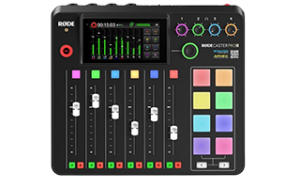It certainly isn’t cheap, but the RØDECaster Pro II makes podcasting effortless with a bit of extra compatible gear.
The RØDECaster Pro II is a pricey pathway to quality podcast audio
How good do you want your podcast audio to sound? That’s the question that drove me to buy the original RØDECaster Pro when I started the Here’s My Movie podcast. I was initially content to record on the mics we had at home. But my podcast co-host sagely advised we invest in quality audio, which meant buying a bunch of RØDE gear. Fast-forward to the RØDECaster Pro II, and how does it fare?
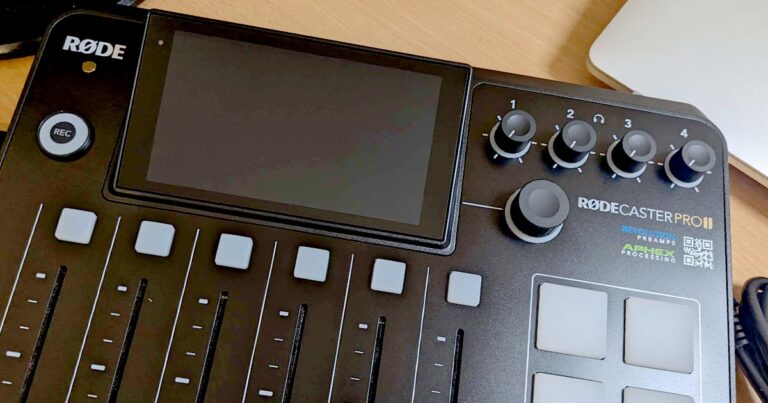
How much does cost the RØDECaster Pro II cost in Australia?
Whether you’re buying from RØDE or one of its competitors, expect to pay close to or above $1,000. Quality audio recording outside of a sound studio doesn’t come cheap. Admittedly, you can pick up the still-very-robust RØDECaster Pro today for around $700. Alternatively, you’re looking at prices around $900 for the TC Helicon GoXLR and around the same for the Zoom PodTrak P8.
At the time of writing, the best price I could find for the RØDECaster Pro II was $899, which is a killer price and comfortably below the $1,199RRP (closer to $999 at most outlets). While still expensive, getting the RØDECaster Pro II at a lower price makes it very appealing next to its closest competitors.
RØDECaster Pro II setup and recording
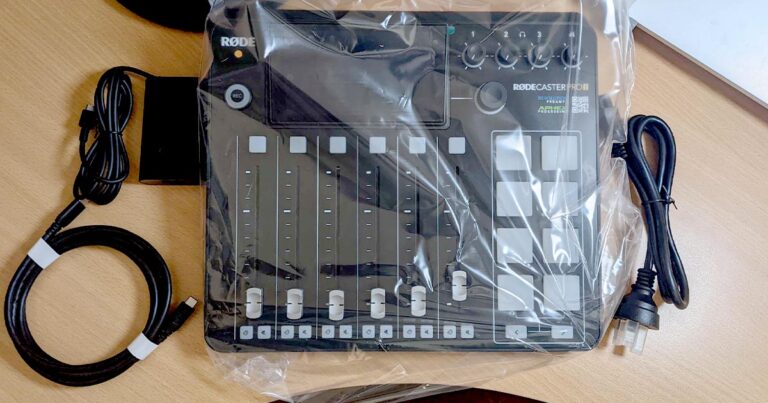
The opportunity to review the RØDECaster Pro II inspired me to revive my dormant podcast. In the past, my co-host took care of recording duties, so I didn’t know what to expect in terms of a learning curve for the RØDECaster Pro II. Assuming you have compatible microphones, there isn’t a learning curve.
After plugging in the USB-C power cable, all I did was connect two RØDE Procaster microphones that we already had lying around. Once the RØDECaster Pro II powered on, I was relieved to see a step-by-step guide on the generously sized touchscreen. It walked me through creating a show, setting default audio levels with the six physical sliders, plugging in monitoring headphones (and setting an appropriate playback level), and even selecting what was plugged into the four multipurpose inputs.
For musos, you can select line-in devices or instruments for the combo jacks. For podcasters and anyone else otherwise seeking audio recording, there are generic mic options or there are RØDE-specific configurations. Our dual RØDE Procaster mics were too sensitive at default 50dB levels, but a few taps on the screen took them down to a manageable 35dB. Now the mics were correctly only recording the individual voices they were supposed to (we sit close together).
After that, it was a simple task of rotating a dial to control audio for our monitoring headphones, and we were good to go. Inserting a MicroSD card gave us something to record to, then all I did was tap the record button once to go live, once again to pause (handy for bathroom breaks) and a longer tap to stop recording. There are also some preconfigured sound effects and a (hopefully not copyright) music track on the programmable smart pads.
We recorded the podcast without any post-editing and here’s what we got. Check out this intro snippet below. Admittedly, for my ears at least, there isn’t a noticeable difference in quality between the RØDECaster Pro-recorded episodes and the latest one recorded on the RØDECaster Pro II, but that’s not really the point of this audio deck.
Podcast sample recorded with the RØDECaster Pro II
What is RØDE?
RØDECaster Pro II versatility
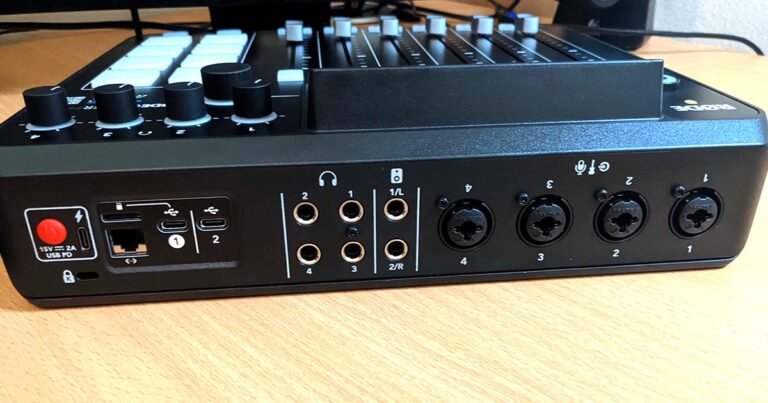
If you’re just after the RØDECaster Pro II for podcast recording, you can stop reading this review. It’s incredibly easy to use yet has a depth that’s not even fully unleashed because RØDE plans on adding new features via upcoming firmware updates. By the way, WiFi connectivity makes firmware updates a breeze, plus the RØDECaster Pro II also has Ethernet, Bluetooth and two USB-C ports for connecting devices like phones.
Those USB-C ports can also be used to connect to two computers simultaneously—handy for streamers looking to go all out on the audio front—or you can just connect to one. That’s what I did for the last week of my in-depth testing, and it’s honestly ruined me for audio playback (in a very good way).
I’ve been spoiled lately with quality audio from the Razer Leviathan V2 soundbar and the even better sound from the Creative Sound Blaster Katana V2 soundbar. If I didn’t need to listen out for couriers—because the RØDE NTH-100 headphones that came with my review kit are great at passively blocking external audio—I’d happily spend my days pleasantly discovering new layers to songs and soundscapes I’m very familiar with. The playback quality is incredible.
Granted, you need to sacrifice quite a bit of desk space for the RØDECaster Pro II. If that’s not an issue, I was pleasantly surprised to find that it just worked when connecting it to a Windows 11 PC. I could still control audio playback levels with the relevant volume knob. And I took things a step further with the RØDE PodMic that was also part of my review kit. While I did have some issues with in-game voice comms transmitting as my comms in one game, the audio/mic combo was otherwise greatly appreciated.
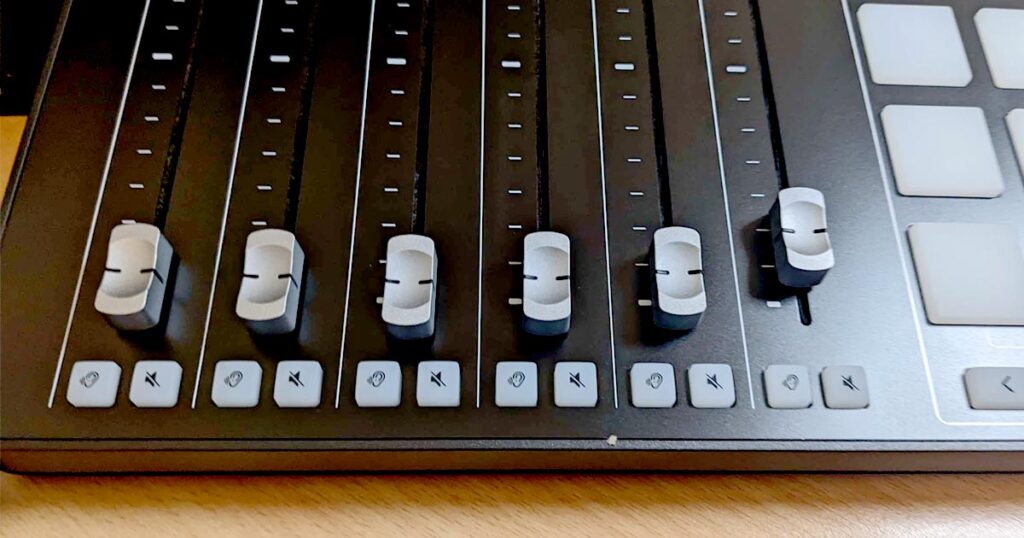
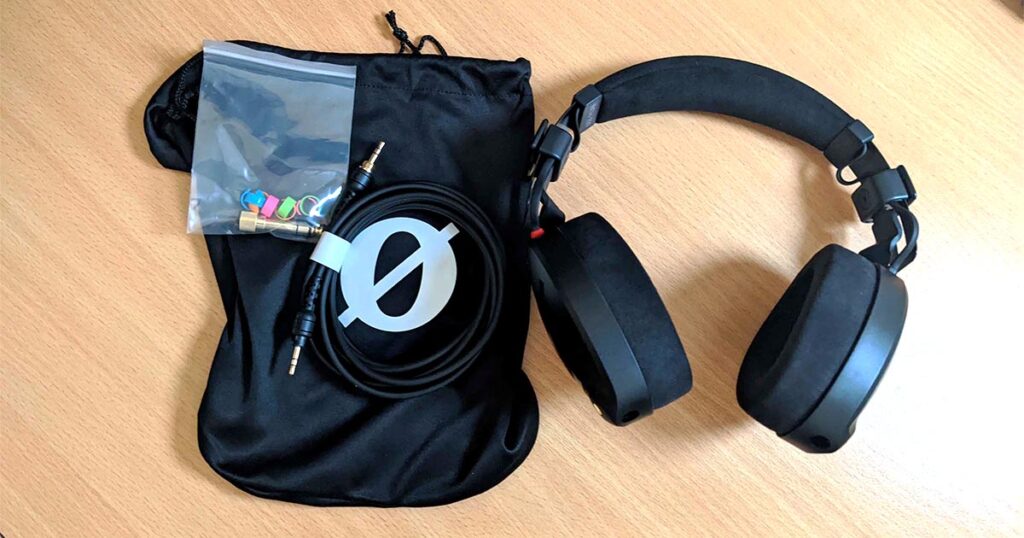
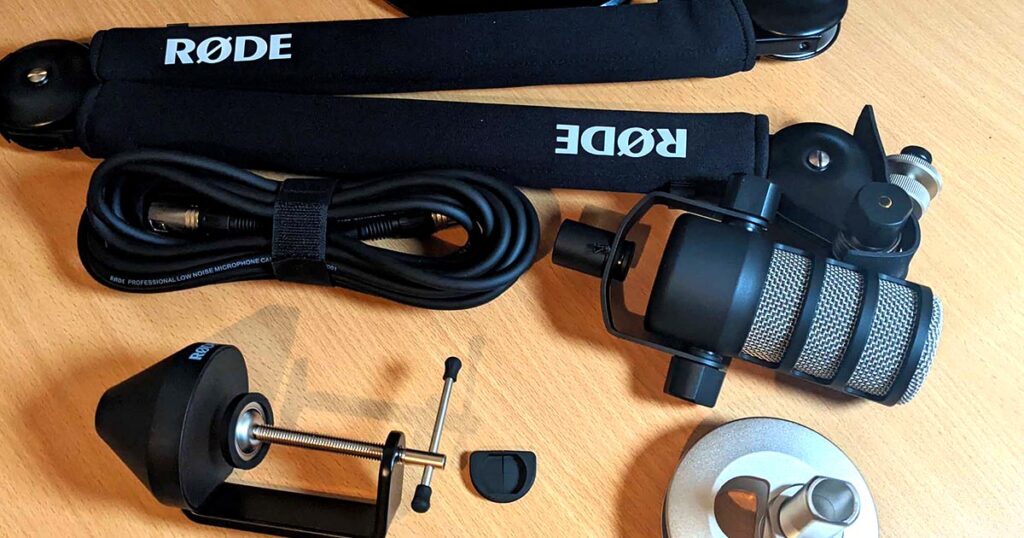

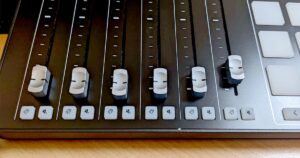
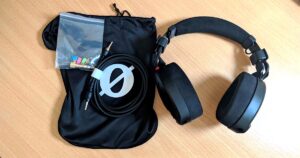
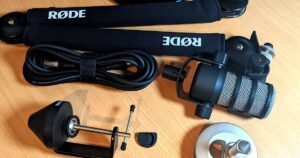

Is the RØDECaster Pro II worth buying?
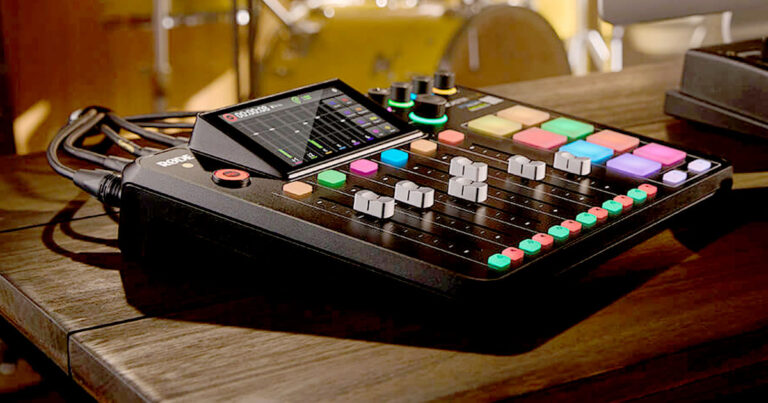
If you’re in the market for an audio mixer that’s easy to use, offers high-quality recording, and encourages tinkering, the RØDECaster Pro II is a fantastic choice. There’s money to be saved by choosing the RØDECaster Pro over the RØDECaster Pro II. But that extra investment offers awesome versatility that encourages podcasters and the like to take their recordings to the next level.
How we review audio mixers
Because it’s not possible to test audio mixers without recording devices, we start with those. A good audio mixer will let you use the microphones you may already own, but we understand that brand allegiance may make certain models easier to interface.
Speaking of easier, we like an audio mixer that guides the user through its initial setup. Just because audiophiles can get a great appreciation out of a pricey product, doesn’t mean that we’re writing for that market. In fact, we’re writing for everyday people who want to record quality audio, be that for a podcast, live stream or music.
On that point, an audio mixer that offers the versatility to record more than just microphones earns a big plus. We put the audio mixer through its paces by testing how easy it is to record and play around with its settings, paying close attention to the audio quality of the end result. Any versatility options that are relevant for everyday users—such as connecting to computers—are also tested.
RØDECaster Pro II FAQs
Related Articles





